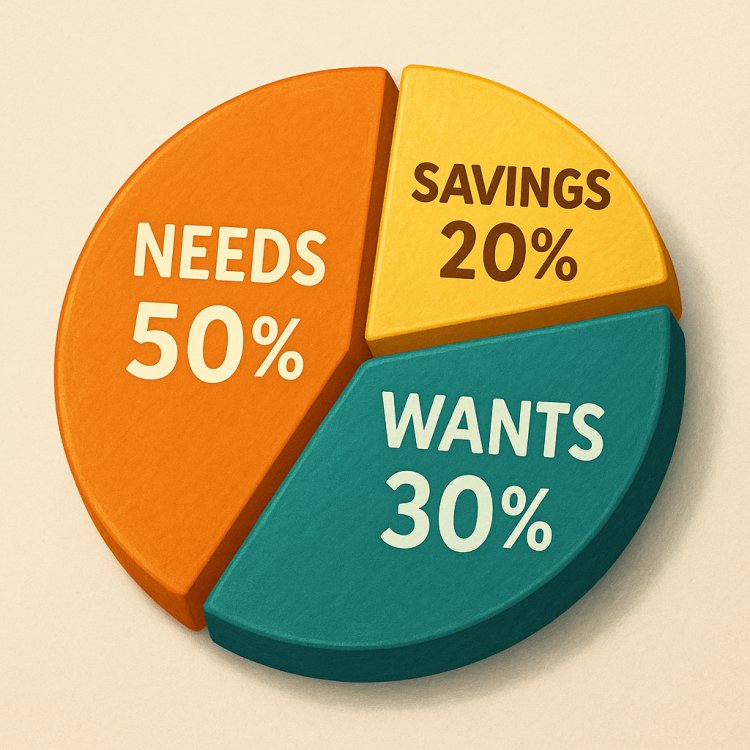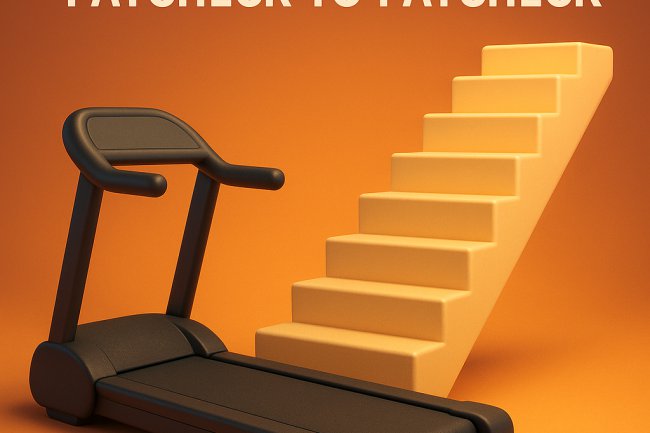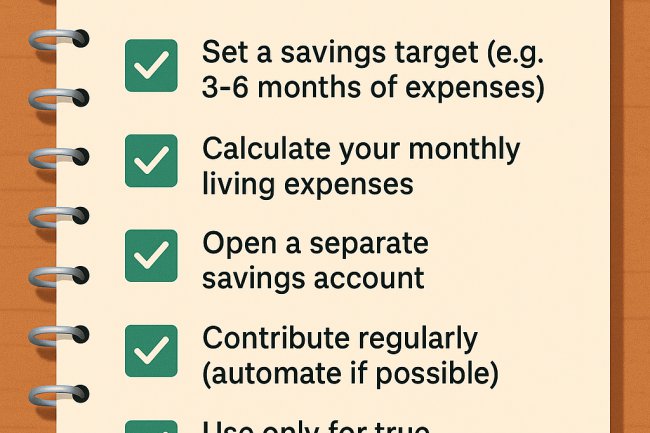The 50/30/20 Rule — Simplified
Learn how to budget easily using the 50/30/20 Rule. Discover how to divide your income between needs, wants, and savings using real African examples like rent, SACCOs, and money market funds.

Budgeting Made Effortless for Real People
Introduction: The Easiest Way to Stop Overspending — Forever
Most people don’t struggle with money because they earn too little.
They struggle because they don’t have a simple system for where their money should go.
Budgets often feel complicated — endless spreadsheets, tracking every expense, and guilt after every splurge.
But what if there was a simple, no-stress formula that fits any income level?
That’s where the 50/30/20 Rule comes in — a globally proven budgeting framework that’s easy, flexible, and effective.
It’s not about being perfect. It’s about creating balance between needs, wants, and savings — and staying consistent month after month.
What Is the 50/30/20 Rule?
The 50/30/20 Rule is a money management method that divides your monthly income into three clear categories:
-
50% for Needs — the essentials that keep you living and functioning.
-
30% for Wants — the things that make life enjoyable.
-
20% for Savings and Investments — your future financial freedom.
It’s simple enough for anyone to follow — yet powerful enough to transform your finances in just a few months.
Step 1: 50% — Cover Your Needs
These are your must-haves. The expenses you can’t skip without affecting your day-to-day life.
Examples:
-
Rent or mortgage
-
Food and groceries
-
Transportation (fuel, matatu, BRT, ride apps)
-
Utilities (electricity, water, Wi-Fi, phone)
-
Insurance and essential bills
African Context Example:
If you earn KSh 100,000 (or about $700) per month, your needs budget is KSh 50,000.
That could include:
-
KSh 25,000 for rent
-
KSh 8,000 for food
-
KSh 5,000 for transport
-
KSh 5,000 for utilities
-
KSh 7,000 for healthcare and essentials
Key Rule:
If your needs exceed 50%, it’s time to cut back, find cheaper alternatives, or look for ways to grow your income.
Step 2: 30% — Enjoy Your Wants
Wants are things that make life more enjoyable — not essential, but valuable for comfort and happiness.
Examples:
-
Dining out, entertainment, or streaming subscriptions
-
Fashion, leisure, or small luxuries
-
Vacations, dates, or social events
-
Upgrades — like a new phone or home décor
African Context Example:
From the same KSh 100,000 income, your 30% (KSh 30,000) could cover:
-
KSh 10,000 for leisure or entertainment
-
KSh 10,000 for personal care or hobbies
-
KSh 10,000 for social giving or small treats
Wealth Insight:
You don’t need to eliminate enjoyment — you just need to give it boundaries.
This section of your budget keeps you motivated and emotionally balanced — because financial success isn’t just about numbers, it’s also about quality of life.
Step 3: 20% — Save and Invest for Your Future
This is the category that separates financial survivors from financial builders.
Your savings and investments are your tools for freedom — they protect you from emergencies and grow your wealth over time.
Examples:
-
Emergency fund (at least 3–6 months of expenses)
-
SACCO contributions
-
Money Market Funds (MMFs)
-
Treasury Bonds or Bills
-
Digital investments (ETFs, index funds, REITs)
African Context Example:
From your KSh 100,000 income:
-
KSh 10,000 could go to a SACCO or cooperative savings account.
-
KSh 5,000 could be invested in a Money Market Fund (earning 9–12% yearly).
-
KSh 5,000 could go into a long-term investment like Treasury Bonds or a small side business.
Wealth Insight:
You don’t get rich by working harder — you get rich by letting your money work for you.
Bonus Step: Automate Your Percentages
Automation is your best financial friend.
Set up standing orders or mobile banking rules that automatically divide your income as soon as it arrives.
For example:
-
50% stays in your main account for bills.
-
30% goes to a “Lifestyle” account.
-
20% automatically moves to your SACCO, investment, or savings account.
When you automate, you don’t rely on willpower — you rely on structure.
Why the 50/30/20 Rule Works
-
It’s Simple: You don’t need financial jargon to understand it.
-
It’s Flexible: It works whether you earn $200 or $2,000 per month.
-
It’s Sustainable: It allows fun while building your future.
-
It’s Transformational: It forces you to live intentionally, not emotionally.
Most importantly, this rule removes guilt from your finances.
You’ll know exactly what’s for bills, what’s for joy, and what’s for growth.
That’s how financial peace begins.
African Adaptation: Making the Rule Work Locally
Africa’s economies vary widely — from Nairobi to Lagos, Accra to Johannesburg. So adapt the formula to fit your cost of living and opportunities.
Tips for Local Adaptation:
-
If your rent or transport costs are high, adjust to 60/25/15.
-
Always include SACCOs or MMFs under your “Savings” category.
-
Add a “Giving” category if it’s important to your culture — but within your 30% lifestyle segment.
The goal is not rigid perfection, but long-term consistency.
The Real Goal: Freedom, Not Frugality
Budgeting isn’t about restriction — it’s about control.
When you master your percentages, you master your future.
Financial freedom doesn’t start with millions.
It starts with structure.
And the 50/30/20 rule is that structure.
It gives you permission to enjoy today — while building tomorrow.
What's Your Reaction?




















